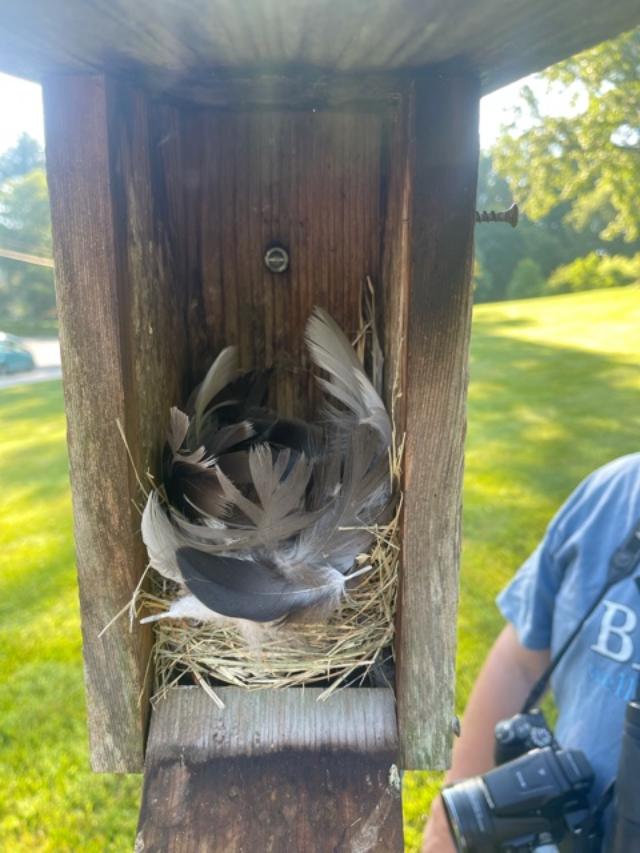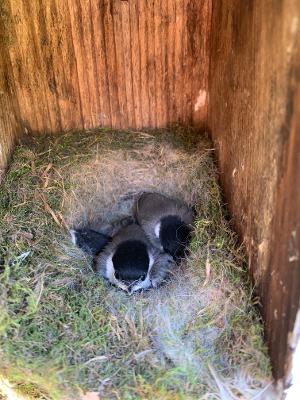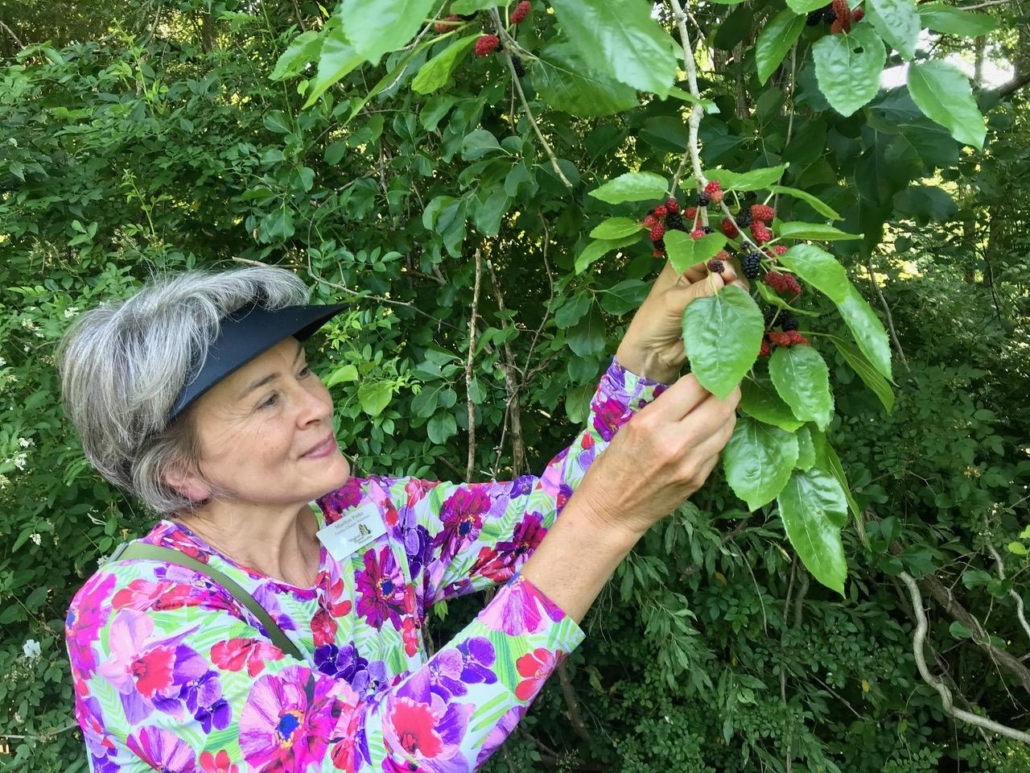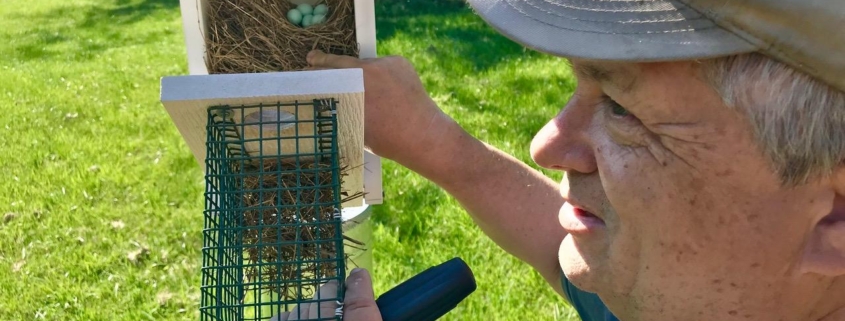FMN CE Hike: Bluebird Box Monitoring — Awesome!
BB nest feature photo by Barbara J. Saffir
Have you ever wondered what’s inside those white boxes on poles standing in open fields? They are Bluebird boxes paid for and erected by Bluebird Societies to provide habitat for Bluebirds, native cavity nesters. Trained personnel regularly monitor the boxes to record data for scientific research. A Fairfax Master Naturalist group recently explored the inside of 12 of them with Larry Meade, Northern Virginia Bird Club President and volunteer with the Virginia Bluebird Society. I was reminded of the carol The 12 Days of Christmas as Larry carefully opened each “gift” for a peek inside.
Organized by FMN Barbara Saffir, we met at Clark’s Crossing in Vienna on the Washington & Old Dominion Trail. Larry tapped the side of each box first to warn the parent bird of our approach. Their departure from the box was our first clue to which species was inside. The boxes are intended for use by Eastern Bluebirds but the conservation groups don’t mind if they are used by Tree Swallows (TS), Chickadees and other native cavity nesters. Nesting by other species, such as the non-native House Sparrow, is prevented by removing nesting material before it is completed. The opening is too small to allow entry by European Starlings.
Larry then unscrewed the side of the box, lowered it and we’d look inside. What follows is the day’s official report, enhanced by Larry’s astute birding observations and comedic interludes:

Nest 1 – TS nest – 5 eggs
Tidbit: Tree Swallows use feathers to “feather their nests.”
Nest 2 – BB nest – 3 eggs
Tidbits: Bluebirds use pine needles to make their nests. Larry was logging eBird sightings and “birding by ear.” He wryly noted “butterflying by ear” doesn’t work.
Nest 3 – TS nest – 4 babies ready to go
Tidbit: We viewed quickly so parents could return and resume feeding these voracious eaters.
Nest 4 – BB nest – 3 babies
Tidbit: Larry used a mirror so we could see the babies tucked deep in the nest. This is the second brood in this box for the Bluebird pair.
Nest 5 – TS – 4 babies
Nest 6 – TS nest – 5 eggs
Tidbit: Parent was agitated and circling us. We moved on quickly.
Nest 7 – TS nest -4 big babies
Tidbit: Box monitors remove a nest after the babies have fledged so parents can build a new one. Turkey Vultures are known as TVs. What is a pair called? A TV set.
Nest 8 – TS nest – 5 babies

Nest 9 – Chic nest – 3 Babies
Tidbit: Carolina Chickadees! Parents use moss to make the nest. Chickadees are native species and left alone.
Nest 10 – empty
Tidbit: In nearby trees we see a juvenile Orchard Oriole! Larry notes that seeing a new bird is like seeing a movie star. So true!
Nest 11 – TS nest – 3 babies
Tidbit: We discover a nearby mulberry tree and taste some of the berries. No wonder birds love them!

Nest 13 – BB nest – 5 eggs
Tidbit: The nest is about 3 times as high as the other BB nests we’ve seen.
If you are interested in volunteering to monitor bluebird boxes, contact the Virginia Bluebird Society. Monitoring season runs from the end of April to early August each year. The excitement and joy of opening the boxes will enhance your contributions to citizen science!




